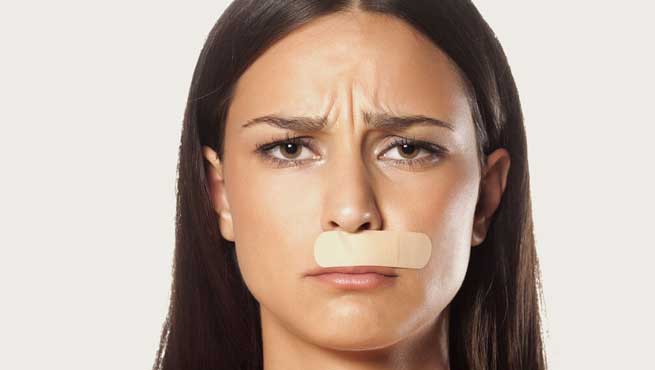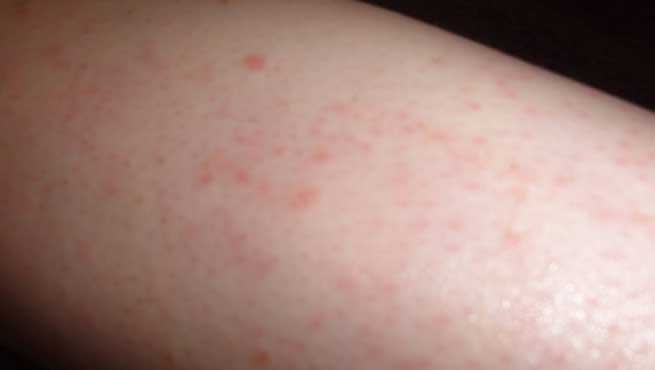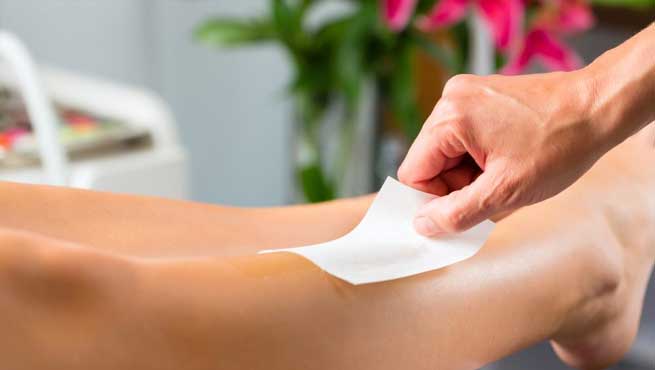Following a waxing session, it’s not uncommon to notice the emergence of small red bumps and breakouts on the skin. This occurrence is often identified as folliculitis, characterized by the inflammation of hair follicles. Folliculitis can manifest as red or pinkish bumps; sometimes, they may be filled with pus. It typically arises when hair follicles become irritated or infected, leading to discomfort and a less-than-desirable appearance on the skin. Understanding the causes and adopting appropriate post-waxing care can significantly minimize the risk of folliculitis and contribute to smoother, irritation-free skin post-wax.
Why Do I Get Bumps After Waxing?
During the waxing process, your hair follicles undergo a lot of stress. Your skin reacts to the heat of the wax and its ingredients, leading to inflammation of your hair follicles almost immediately. Coupled with the force used to yank the waxing strips off your skin to remove your hair, this leads to tiny red bumps, often leaving your skin irritated and sore.
Also Read – Waxing vs. Epilators – Which hair removal method is better?
What Can I Do About These Post-Waxing Bumps?
If you frequently experience bumps after waxing, then there are some steps you can take to minimize their appearance and free you of the pain, redness, irritation, and other associated symptoms. In this post, we will tell you a few tips to prevent these bumps from occurring and a few post-waxing tips to eliminate any waxing bumps that may have developed. (1) (2)
How to Prevent Waxing Bumps
Prevention is always better than cure, so let’s first look at ways to prevent these bumps from forming. Try these out before heading to your next waxing session to ensure healthy, smooth skin afterward.
Exfoliate before waxing
Before your waxing appointment, exfoliate your skin properly to unclog all the pores in the area to be waxed. This will help remove the dirt, oil, and dead cells from the surface. It also makes hair removal more accessible, making the hairs stand up straight so they can be fully strapped and secured by the waxing strips and wholly removed from their follicles.
Also Read – Waxing – Before or After a Shower? All That You Need to Know
Hot Compress
Applying a hot compress on the skin just before waxing also helps to prevent waxing bumps. Prepare one by dipping a clean washcloth in a bowl of hot water, squeezing out the excess water, and then applying it over the skin. This allows pores to open up and softens the hair follicles, making it much easier to pull them off during the waxing session.
Ensure Cleanliness
Always ensure your salon has a hygienic environment and uses fresh wax for your waxing sessions. Wax that has been heated repeatedly and applicators that are not clean and sterilized can cause breakouts due to irritation. Acne can also develop as bacteria from the contaminated wax or applicator lodged in your pores and cause infection, one of the most common reasons for inflammation (folliculitis) post-waxing.
Avoid waxing during your menstrual cycle.
During your period, your skin and nerve endings become extra sensitive. So be sure to avoid waxing a few days before your period commences, as well as during active menstruation. You will experience less pain during waxing, and your chance of getting bumps is markedly reduced. And these waxing bumps are the last thing you want to worry about during your monthly cycle, right?
Communicate with your beautician.
Always tell your beautician or the person waxing you about your sensitivity to waxing. They can use a gentler wax (like aloe vera or strawberry wax) or reduce the heat of the wax to help prevent any skin irritation from occurring.
Also Read – 10 Simple Home Remedies for Milia You Should Know About
How to Get Rid of Waxing Bumps
Now that we have looked at a few ways to prevent these bumps, we should also review some treatment methods. Even though you may follow all the tips above, these waxing bumps are still likely to develop, as your skin may be extra sensitive or need special attention. Everyone’s case is different, and everyone’s skin handles the stress of waxing differently. So, here are a few simple steps to soothe irritated skin and reduce any bumps that may have emerged after waxing.
Do not scrub afterward.
Use a clean, damp cloth (warm ones work better) to wipe the freshly waxed area to remove any wax remnants. Alternatively, rub some coconut oil to help dissolve the wax and simultaneously soothe your inflamed skin. Be sure not to use harsh soaps or scrubs on these areas, as they further aggravate the bumps.
Use an astringent
Using a cooling astringent on the waxed areas will help relieve the inflammation and close the pores that have opened up during the hair removal process. Dab a cotton ball with some astringent and pat it lightly on the affected area for instant relief.
Topical Applications
Topical creams like a low-strength steroid hydrocortisone cream can help soothe skin irritation and provide immediate relief. Apply this cream generously over the bumps twice a day, or more if the packaged instructions indicate to. Due to the steroid’s anti-inflammatory properties, this helps alleviate any irritation or itching sensation on the skin.
Ice Pack
An ice pack is another simple remedy to eliminate these bumps. To make an ice pack, please wrap a few ice cubes in a clean washcloth. Alternatively, use a bag of frozen vegetables. Place this on the affected area every two hours for 15-20 minutes. The cooling effect from the ice will soothe the inflamed area and reduce the irritation and redness.
Some More Things to Keep in Mind
If none of these methods work alone, then make sure you try a combination of them. Always use more than one preventive method before waxing, and feel free to use more than one treatment regimen if your bumps are bothering you. If you have recurring bumps every time you wax despite all efforts to keep them away, try switching salons. Sometimes, folliculitis forms due to a faulty product, like the wax or the wax strips used on your skin. It could also be due to a poor technique used by your beautician. Never be afraid to try waxing at a different salon. Perhaps it could be the solution to your bumps forever.
Summary
After a waxing session, the appearance of small red bumps, or folliculitis, is typical due to the stress hair follicles undergo during the process. The skin reacts to the wax’s heat, leading to inflammation and discomfort. To prevent waxing bumps, exfoliate before the session, apply a hot compress, ensure cleanliness at the salon, and avoid waxing during your menstrual cycle. Communicate sensitivities to your beautician and use gentler wax. If bumps occur, avoid scrubbing, use a damp cloth with coconut oil, apply a cooling astringent, use topical creams, or soothe the skin with an ice pack.



